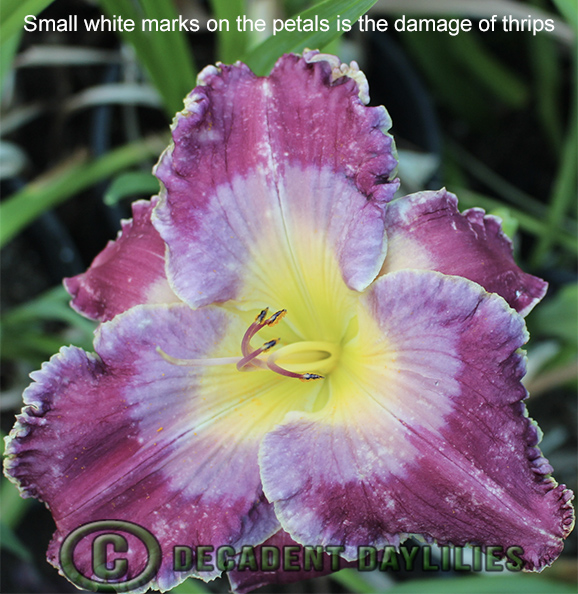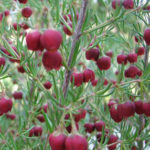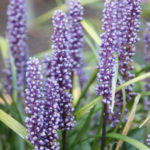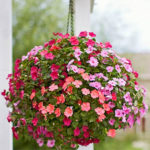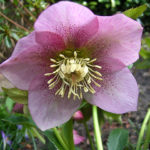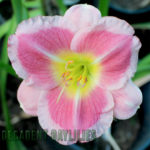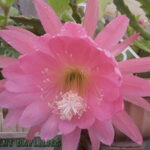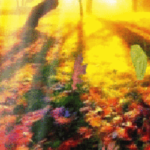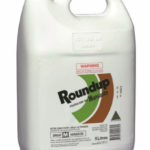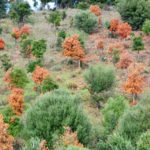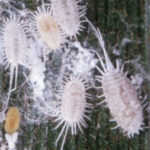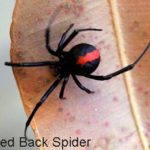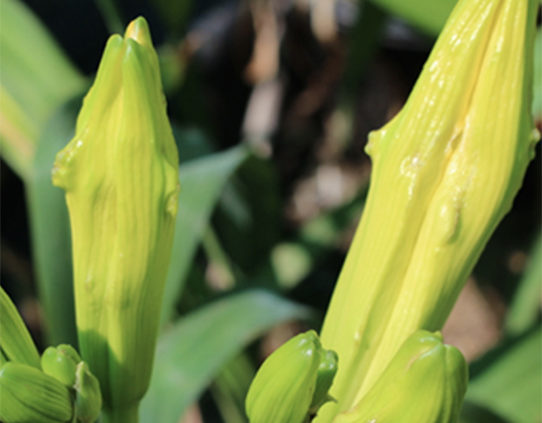
How To Get Rid of Thrips Daylilies Roses
Thrips – How To Avoid Damages Caused By Thrips In Your Garden?
Thrips are very small insects with a slender body. They are a common pest of garden plants and crop plants. The adult insect is less than 1/25th of an inch and either black or straw coloured. There are wingless as well as winged varieties.
What Do Thrips Eat?
They have asymmetrical mouth parts to extract the plant sap. One of the mandibles is a bit longer than the other. Apart from damaging the plant parts like leaves and buds by sucking the juice, they also lay eggs on fruits and leaves. This causes discolouration of fruits and leaves. Some thrips feed on the buds and leaves of the plant whereas there are varieties that feed on other insects by sucking the juice out of their body. Flower buds that die before opening and stippled leaves are an indication of thrips attack.
Lifecycle of Thrips
During the spring season, the female troops emerge from the pupal stage and start laying the eggs in the plant tissues of leaves, flowers and stems. Male insects are rare and are smaller than the female. They lay eggs without mating. Each female insect lays more than 80 eggs and it will get hatched within a few days in warmer climates. During cold weather, hatching will take weeks or months. The larvae emerging from the eggs are wingless and are called nymphs. They feed on the sap of the plant. After passing through 2 or more moulting stages, the thrips drop to the soil to start pupating. The pupae, as well as the adult insects, overwinter inside the soil. After pupation, the insect repeats the cycle. In a single year, more than 12 generations are produced. During warm weather, the life cycle requires only 16 days
Flower Damage By Thrips
Thrips cause cosmetic damage to the flowers. They can cause terrible damage to the flower petals of daylilies. The flowers of the woody plants like roses can also be affected by thrips attack. Dark streaks and spots may appear on the petals due to the feeding injury caused by thrips during the bud stage. Sometimes, the flower buds even fail to open due to the deformity caused by the insect attack. The mature and larval thrips feeds on the sap of the petals. Pictured is thrips inside the buds. If you open the bumpy bud you will see plenty of thrips. Read on to see how to prevent and get rid of thrips.
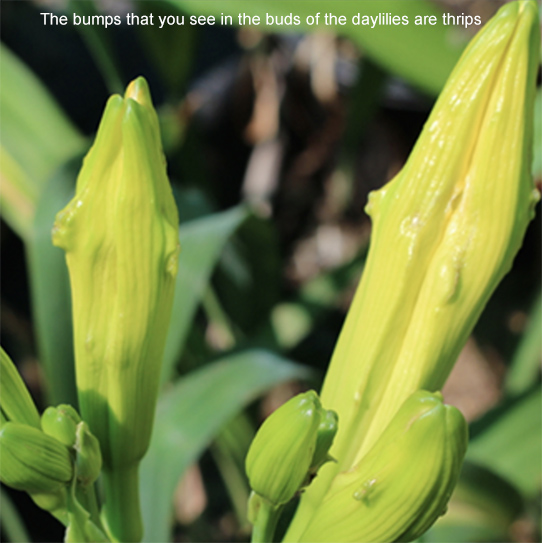 Leaf Damage By Thrips
Leaf Damage By Thrips
Feeding on the leaves of the plant affects the overall appearance of the plant. The leaves become distorted and papery after losing the sap. Pale spots start appearing on the leaves and the leaves fall off prematurely. The terminals of the plant get affected by the pests become rolled and discoloured. This can cause stunted growth of the plant.
How to Prevent Control and Get Rid of Thrips?
Prevent Thrips
Thrips are usually seen in dry weather conditions this means if you keep your plants watered and not let them dry out completely for some time you will not encourage thrips into your garden. Other best ways to get rid of this pest insect is by reducing the breeding areas of this insect in your garden. Remove any affected parts of the plant or plant debris from the garden as well as remove any weeds and grass in your garden as they can act as alternate hosts.
How to Control Thrips in the Garden
Use strong water spray to reduce the number of insects. Use sticky thrip traps to remove the thrips. Use biological control like lacewing, ladybugs or pirate bugs destroys the insect in different stages of the life cycle.
In case of severe attacks, use botanical insecticides.

